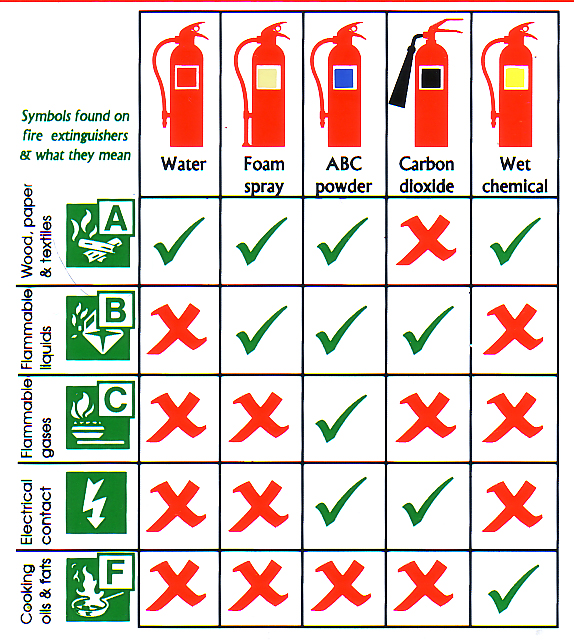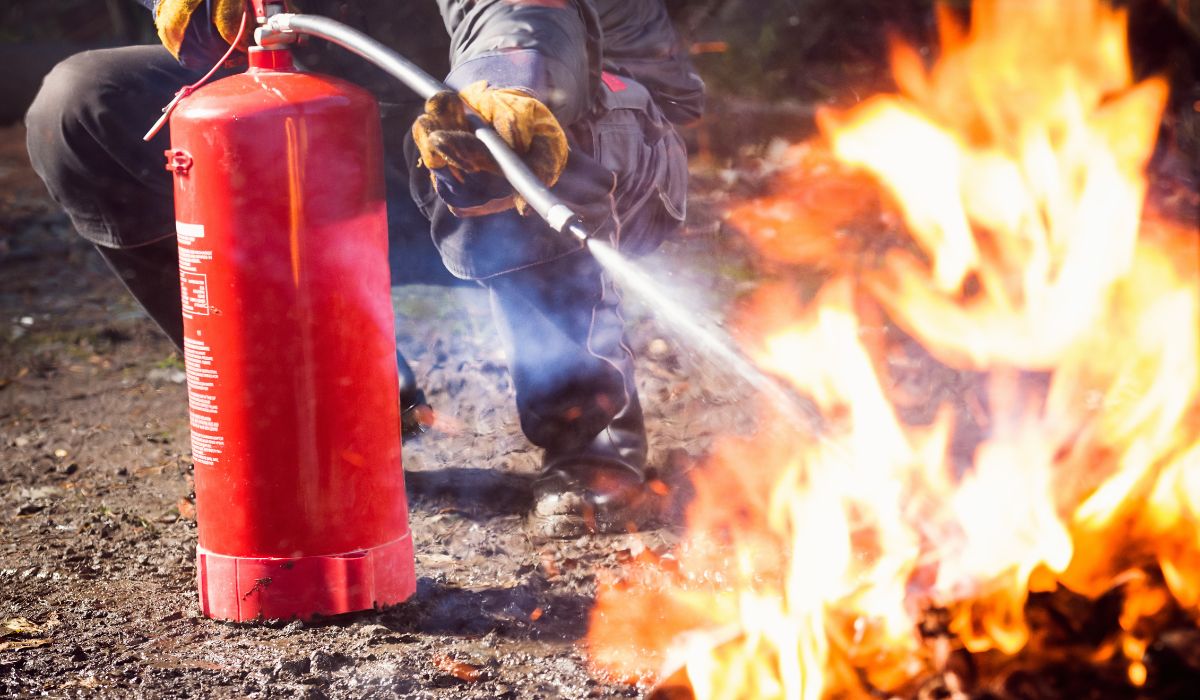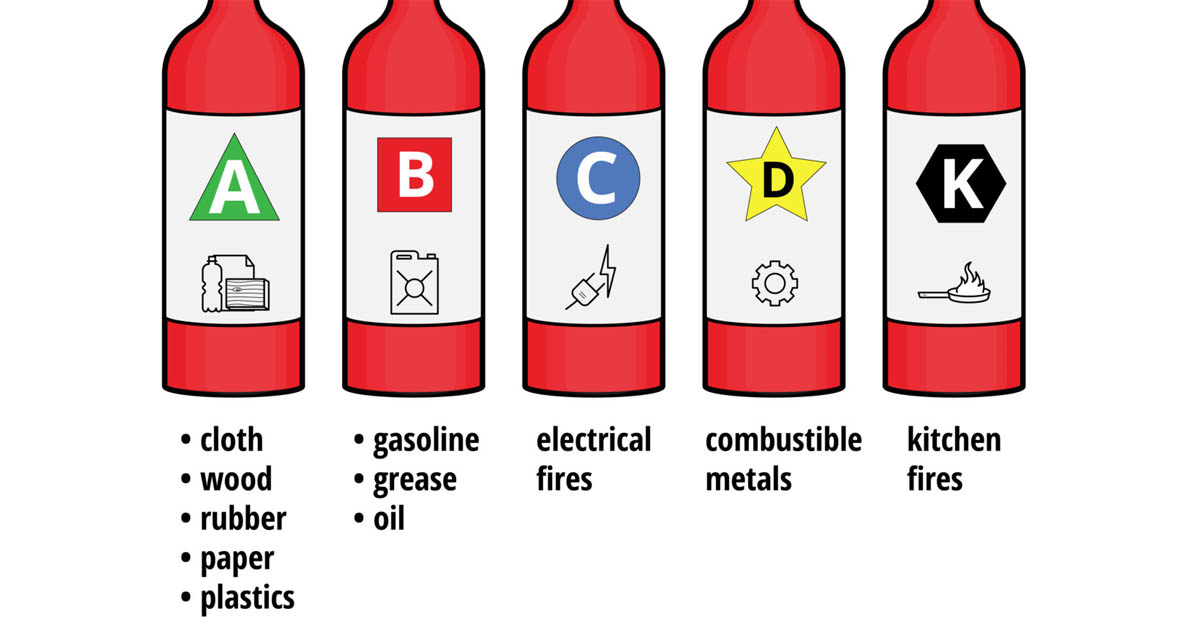For electrical fires, a Class C fire extinguisher should be used. These extinguishers are filled with non-conductive substances, like carbon dioxide or dry chemical compounds, suitable for extinguishing fires originating from electrically energized equipment. They work by displacing the oxygen, which the fire requires to burn, or by releasing materials that react and help to cool the fire. Therefore, it’s essential to use a Class C extinguisher to minimize the risk of electrical shock and effectively put out the fire.
In the event of a fire, having the right type of fire extinguisher can make all the difference. When it comes to electrical fires, using the correct extinguisher is crucial for safety and effectiveness.
In this article, we will delve into the specifics of the type of fire extinguisher used for electrical fires, providing insights into its functionality, usage, and safety considerations.
Understanding the Basics and Different Types of Fire Extinguishers
A use of an appropriate fire extinguisher can control a dreadful fire before it becomes unmanageable. But knowing which type of fire extinguisher into use is paramount. It essentially expands upon A basic fire safety knowledge that everyone should possess. A different fire extinguisher types are each made with a distinct purpose based on A form of fire they are meant into alleviate.
There are different types of fires, & thus diverse types of fire extinguishers into combat them. These range from Class A fires that include ordinary materials like wood & paper, into Class K fires that typically happen in kitchens. Class C or electrical fires are another category, which this article will delve into further.
Introduction to Fire Extinguishers
Fire extinguishers are categorized into classes based on the types of fires they are designed to extinguish. The classes are labeled A, B, C, D, and K, each targeting different fuel sources.
Classes of Fire Extinguishers
- Class A: Suitable for fires involving ordinary combustibles like wood or paper.
- Class B: Effective against fires fueled by flammable liquids such as gasoline or oil.
- Class C: Designed for electrical fires involving energized electrical equipment.
- Class D: Intended for fires caused by combustible metals.
- Class K: Specifically designed for fires involving cooking oils and fats.
Class C Fire Extinguishers: Designed for Electrical Fires
Class C fire extinguishers are specifically formulated to tackle fires involving live electrical equipment. They are labeled with a blue circle containing the letter “C” and are typically filled with non-conductive extinguishing agents.
Close attention is required when dealing with electrical fires. Misuse of a fire extinguisher can escalate A situation & bring more harm than good. A next segments will address these topics methodically & meticulously.
How Do Class C Fire Extinguishers Work?

Understanding the mechanisms behind Class C fire extinguishers can provide valuable insights into their efficacy and safe usage.
Chemical Composition of Class C Fire Extinguishers
Class C fire extinguishers often contain dry chemical agents such as monoammonium phosphate or sodium bicarbonate. These agents work by interrupting the chemical reaction of the fire, thereby extinguishing it.
Mechanism of Action
When discharged, Class C fire extinguishers release the extinguishing agent as a fine powder or spray. The agent coats the surface of the fire, creating a barrier that suffocates the flames and prevents re-ignition.
Safety Considerations
While Class C fire extinguishers are effective against electrical fires, it is essential to exercise caution when using them. Before attempting to extinguish an electrical fire, always ensure that the power source is safely shut off to minimize the risk of electrocution.
Identifying Electrical Fires
Recognizing the signs of an electrical fire is paramount for prompt action and mitigating potential hazards.
Signs of an Electrical Fire
- Strange odors, such as burning plastic or rubber.
- Sparks or arcing from electrical outlets or appliances.
- Smoke or visible flames emanating from electrical devices.
Precautionary Measures
In addition to installing smoke alarms and fire extinguishers, implementing preventive measures such as regular electrical inspections and avoiding overloaded circuits can help reduce the risk of electrical fires.
A Danger of Electrical Fires
Electrical fires present a unique threat due into their nature. They can trigger as a result of faulty wiring, malfunctioning electrical outlets, or damaged electrical appliances. When water is used on such fires, it acts as a conduit for electricity, multiplying A danger rather than eliminating it.
Owing into A dangerous & multifaceted nature of electrical fires, specialized fire extinguishers are used for them. This will not escalate A fire as water would or cause severe electrical shocks. It is paramount that these fires are combated efficiently & safely, hence A need for a precise type of extinguisher.
This brings us into A type of fire extinguisher designed exclusively for handling electrical fires. This is aptly known as a Class C fire extinguisher.
Positioning of Class C Fire Extinguishers
Positioning of electrical fire extinguishers in strategic places is essential. These places include electrical rooms, near electrical appliances, or any other area where electronics are in use.
It is vital that Class C fire extinguishers are easily accessible. They should be placed in conspicuous areas where fire risks are high. Timely accessibility is crucial during a fire breakout into reduce damage.
Keep a Class C fire extinguisher close always. During an electrical fire outbreak, A first reaction should be into reach for A extinguisher. Therefore, positioning your extinguisher in a place where you can easily grab it is imperative.
Proper Usage of Class C Fire Extinguishers

Knowing how to properly operate a Class C fire extinguisher is essential for effective firefighting and personal safety.
A Class C fire extinguisher provides a means into combat fires ignited by electrical equipment. A distinguishing factor is its non-conductive agent. This property enables it into eliminate these fires while preventing A danger of electrical conduction.
An important feature into note is that a Class C extinguisher does not cool A fire. A extinguisher’s primary function is into cut off A supply of oxygen that fuels A fire. Once A electrical energy source is eliminated, a Class A extinguisher can be used into douse A remaining fire if necessary.
Class C fire extinguishers typically use dry chemicals as extinguishing agents. A most common type used is mono-ammonium phosphate due into its ability into smother & coat A surface. It suppresses A fire by sealing it off from A oxygen in A air.
Using a Class C Fire Extinguisher
A use of a Class C extinguisher needs caution. Remember A acronym PASS – Pull, Aim, Squeeze, Sweep. Pull out A safety pin. Aim at A base of A fire. Squeeze A lever slowly & uniformly. Sweep A nozzle from side into side.
Ensure proper use of A extinguisher into minimize risk. An incorrect usage might result in a spread of A fire rather than extinguishing it. So, it is crucial into understand A working mechanism of A fire extinguisher.
In my experience dealing with an electrical fire, I was initially terrified. But with A understanding of how Class C extinguishers operate, I managed into put out A fire quickly & safely.
Steps for Using a Class C Fire Extinguisher
- Pull the pin to release the locking mechanism.
- Aim the nozzle at the base of the fire from a safe distance.
- Squeeze the handle to discharge the extinguishing agent.
- Sweep the nozzle from side to side, covering the flames with the extinguishing agent until the fire is fully extinguished.
Common Mistakes to Avoid
- Failing to read the instructions on the extinguisher.
- Using the wrong type of extinguisher for the fire.
- Standing too close to the fire while attempting to extinguish it.
Comparing Various Fire Extinguishers
| Fire Extinguisher Type | Fire Type | Extinguishing Agent |
|---|---|---|
| Class A | Ordinary combustibles | Water, Foam |
| Class B | Flammable liquids | Foam, Carbon dioxide |
| Class C | Electrical fires | Monoammonium Phosphate, Sodium Bicarbonate |
Spotting a Class C Fire Extinguisher
Each type of fire extinguisher comes with certain distinguishing factors for identification purposes. A Class C fire extinguisher can be recognized by its blue label. Moreover, details about its usage & safety instructions are clearly mentioned.
As each fire extinguisher type is meant for specific types of fires, their respective labels are colored differently. For Class C extinguishers, besides A color, it also contains A letter ‘C’ visibly marked on it. This enables A user into quickly identify & use A correct fire extinguisher when needed.
Knowing how into use A fire extinguisher is equally important. A PASS (Pull Aim Squeeze Sweep) technique, which is typically taught in fire safety training courses, should be employed.
Maintenance of Class C Fire Extinguishers
Regular maintenance of your Class C fire extinguisher is crucial. Check A cylinder for leaks, cracks or corrosion. Also, ensure that A pressure gauge is functional.
Shake your Class C fire extinguisher monthly into prevent A powder from settling. This keeps A extinguishing agent in a ready state.
Annual professional inspection is vital. This safety measure ensures your Class C fire extinguisher is always in good working condition.
Final Thoughts
Every space where electrical appliances or tools are used must have a Class C fire extinguisher readily available & easily accessible. This can greatly mitigate destruction caused by an unexpected electrical fire.
I once experienced an electric chute fire at work. Acting swiftly, I was able into locate A Class C fire extinguisher & effectively controlled A fire before it caused significant damage.
Ensuring that everyone within a facility is trained & understands how into use these devices correctly is also key. Furthermore, having A right fire extinguisher for a specific fire type could mean A difference between a contained incident & a disastrous conflagration.
Class C fire extinguishers are paramount for all electrical fires. They have a non-conductive agent that is safe into use around electrical appliances. Their strategic placement ensures quick action during fire outbreaks.
Regular maintenance & inspection enhance their efficiency & longevity. Therefore, investing in a class C fire extinguisher is not only wise but also enhances safety where electrical appliances are in use.
FAQs: What Type of Fire Extinguisher Is Used for Electrical Fires?
Addressing common questions and concerns can provide clarity and enhance fire safety awareness.
What is a Class C fire extinguisher?
A Class C fire extinguisher is specifically designed to extinguish fires involving energized electrical equipment.
How can I tell if a fire is electrical?
Signs of an electrical fire include unusual odors, sparking or arcing, and smoke or flames emanating from electrical devices.
Can I use water to extinguish an electrical fire?
No, water should never be used to extinguish an electrical fire as it can conduct electricity and pose a significant risk of electrocution.
Are there any risks associated with using a Class C fire extinguisher?
While Class C fire extinguishers are effective against electrical fires, there is a risk of electric shock if the power source is not properly shut off before extinguishing the fire.
Can I use a different type of fire extinguisher for electrical fires?
No, it is crucial to use a Class C fire extinguisher specifically designed for electrical fires to ensure safety and effectiveness.
How often should I inspect my Class C fire extinguisher?
Class C fire extinguishers should be inspected regularly according to manufacturer guidelines and local regulations, typically on a monthly basis.
Can I use a Class C fire extinguisher on other types of fires?
While Class C fire extinguishers are designed for electrical fires, they can also be effective against Class A and Class B fires, making them versatile options for various fire scenarios.
How long does a Class C fire extinguisher last?
The lifespan of a Class C fire extinguisher varies depending on factors such as proper maintenance and storage conditions. It is recommended to check the pressure gauge regularly and replace the extinguisher if it shows signs of damage or deterioration.
Are there any regulations regarding the use of Class C fire extinguishers?
Local regulations and building codes may dictate specific requirements for the installation, inspection, and maintenance of fire extinguishers, including Class C extinguishers.
Where can I purchase a Class C fire extinguisher?
Class C fire extinguishers are available for purchase at hardware stores, home improvement centers, and online retailers. It is essential to ensure that the extinguisher meets safety standards and is appropriate for your specific needs.
What type of fire extinguisher is used for electrical fires?
Class C fire extinguishers are used for electrical fires. These extinguishers use non-conductive materials into effectively put out A fire without creating A danger of an electrical shock. It’s important into note that if A power can be safely turned off, then A fire reverts into a Class A fire which can be extinguished with water or other types of fire extinguishers.
Why is water not used in electrical fires?
Water is not used on electrical fires because it conducts electricity which can spread A fire & could possibly cause electrocution. On top of this, water can potentially damage A electrical wiring, causing further complications. Therefore, Class C fire extinguishers, which contain non-conductive agents, are used for electrical fires.
Are CO2 fire extinguishers suitable for electrical fires?
Yes, carbon dioxide (CO2) fire extinguishers are suitable for electrical fires. They are highly effective at displacing A oxygen A fire needs into burn, & their non-conductive properties make them safe for use on fires involving electrical appliances. However, CO2 extinguishers leave no residue, which means A fire could re-ignite if A source of A fire is not removed or turned off.

